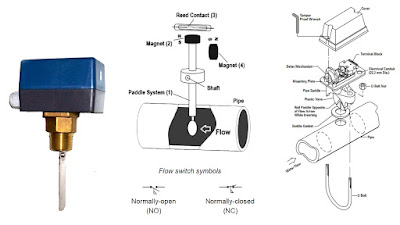Vortex Flow Meter working principle and applications

Vortex Flow Meter A Vortex Flow Meter utilizes a bluff body or cylinder mounted in a pipe spool that creates alternating vortices behind it. The frequency of these vortices is directly proportional to the fluid velocity. These flow meters have no moving parts , minimal maintenance, and are highly reliable for clean fluids. The vortex signal is electronically processed to determine flow rate. Vortex meters work well with most clean fluids and have similar application ranges to DP flow meters. ⚙️ Working Principle As fluid passes around a bluff body, vortices are alternately formed on either side. The rate of vortex formation is proportional to the fluid’s velocity. Sensors detect these pressure fluctuations and convert them into electrical pulses proportional to flow rate. This principle is known as the vortex shedding principle . Vortex flow meters utilize a bluff body or cylinder mounted in a pipe spool that creates alternating vo...

